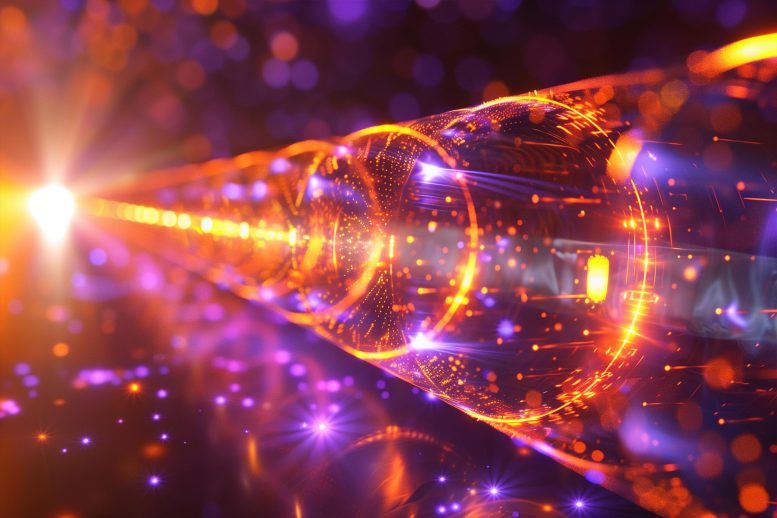
Topological solitons, integral to various natural and technological processes, are being harnessed through non-reciprocal interactions to innovate in materials science and robotics, offering new possibilities for self-propelled motion and advanced functionality. Credit: SciTechDaily.com
If it walks like a particle, and talks like a particle… it may still not be a particle. A topological soliton is a special type of wave or dislocation that behaves like a particle: it can move around but cannot spread out and disappear like you would expect from, say, a ripple on the surface of a pond. In a new study published in Nature, researchers from the University of Amsterdam demonstrate the atypical behavior of topological solitons in a robotic metamaterial, something which in the future may be used to control how robots move, sense their surroundings, and communicate.
Topological solitons can be found in many places and at many different length scales. For example, they take the form of kinks in coiled telephone cords and large molecules such as proteins. At a very different scale, a black hole can be understood as a topological soliton in the fabric of spacetime. Solitons play an important role in biological systems, being relevant for protein folding and morphogenesis – the development of cells or organs.
The unique features of topological solitons – that they can move around but always retain their shape and cannot suddenly disappear – are particularly interesting when combined with so-called non-reciprocal interactions. “In such an interaction, an agent A reacts to an agent B differently to the way agent B reacts to agent A,” explains Jonas Veenstra, a PhD student at the University of Amsterdam and first author of the new publication.
Veenstra continues: “Non-reciprocal interactions are commonplace in society and complex living systems but have long been overlooked by most physicists because they can only exist in a system out of equilibrium. By introducing non-reciprocal interactions in materials, we hope to blur the boundary between materials and machines and to create animate or lifelike materials.”
The Machine Materials Laboratory where Veenstra does his research specializes in designing metamaterials: artificial materials and robotic systems that interact with their environment in a programmable fashion. The research team decided to study the interplay between non-reciprocal interactions and topological solitons almost two years ago, when then-students Anahita Sarvi and Chris Ventura Meinersen decided to follow up on their research project for the MSc course ‘Academic Skills for Research’.
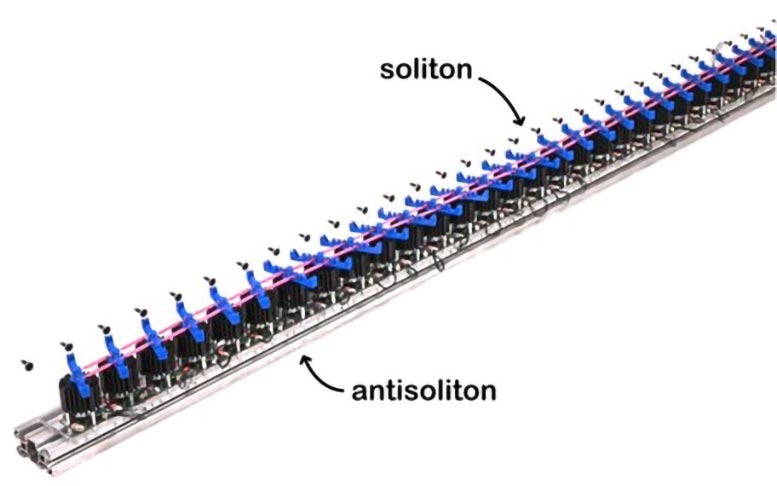
The robotic metamaterial with a soliton and anti-soliton lying at the boundaries between left- and right-leaning sections of the chain. Each blue rod is connected to its neighbors with pink elastic bands, and a little motor under each rod makes the interactions between neighboring rods non-reciprocal. Credit: Jonas Veenstra / UvA
Solitons Moving Like Dominoes
The soliton-hosting metamaterial developed by the researchers consists of a chain of rotating rods that are linked to each other by elastic bands – see the figure below. Each rod is mounted on a little motor which applies a small force to the rod, depending on how it is oriented with respect to its neighbors. Importantly, the force applied depends on which side the neighbor is on, making the interactions between neighboring rods non-reciprocal. Finally, magnets on the rods are attracted by magnets placed next to the chain in such a way that each rod has two preferred positions, rotated either to the left or the right.
Solitons in this metamaterial are the locations where left- and right-rotated sections of the chain meet. The complementary boundaries between right- and left-rotated chain sections are then so-called ‘anti-solitons’. This is analogous to kinks in an old-fashioned coiled telephone cord, where clockwise and anticlockwise-rotating sections of the cord meet.
When the motors in the chain are turned off, the solitons and anti-solitons can be manually pushed around in either direction. However, once the motors – and thereby the reciprocal interactions – are turned on, the solitons and anti-solitons automatically slide along the chain. They both move in the same direction, with a speed set by the anti-reciprocity imposed by the motors.
Veenstra: “A lot of research has focussed on moving topological solitons by applying external forces. In systems studied so far, solitons and anti-solitons were found to naturally travel in opposite directions. However, if you want to control the behavior of (anti-)solitons, you might want to drive them in the same direction. We discovered that non-reciprocal interactions achieve exactly this. The non-reciprocal forces are proportional to the rotation caused by the soliton, such that each soliton generates its own driving force.”
The movement of the solitons is similar to a chain of dominoes falling, each one toppling its neighbor. However, unlike dominoes, the non-reciprocal interactions ensure that the ‘toppling’ can only happen in one direction. And while dominoes can only fall down once, a soliton moving along the metamaterial simply sets up the chain for an anti-soliton to move through it in the same direction. In other words, any number of alternating solitons and anti-solitons can move through the chain without the need to ‘reset’.
Motion Control
Understanding the role of non-reciprocal driving will not only help us to better understand the behavior of topological solitons in living systems, but can also lead to technological advances. The mechanism that generates the self-driving, one-directional solitons uncovered in this study, can be used to control the motion of different types of waves (known as waveguiding), or to endow a metamaterial with a basic information processing capability such as filtering.
Future robots can also use topological solitons for basic robotic functionalities such as movement, sending out signals, and sensing their surroundings. These functionalities would then not be controlled from a central point, but rather emerge from the sum of the robot’s active parts.
All in all, the domino effect of solitons in metamaterials, now an interesting observation in the lab, may soon start to play a role in different branches of engineering and design.
Reference: “Non-reciprocal topological solitons in active metamaterials” by Jonas Veenstra, Oleksandr Gamayun, Xiaofei Guo, Anahita Sarvi, Chris Ventura Meinersen and Corentin Coulais, 20 March 2024, Nature.
DOI: 10.1038/s41586-024-07097-6


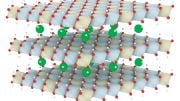
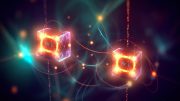



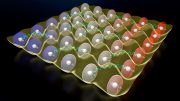
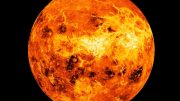
Please think deeply,
1. What is the topological soliton?
2. Do topological solitons have gravity?
3. What is the relationship between topological solitons and topological vortices?
4. Can topological vortices bend time, space, and rules?
and so on.
According to topological vortex gravitational field theory, vortices (matter) and antivortices (antimatter) are formed simultaneously, with the same geometric shape but opposite directions of rotation. Countless topological vortices make spacetime motion more complex via the synchronous effects of superposition, deflection, and twisting. Therefore, there is so much data coming in from the LHC, the most powerful accelerator in the world, that recording it all has never been an option.
All observable movements in the physical world are inseparable from the interaction of topological vortices, including human observational behavior itself.
The universe does not do algebra, formula or fraction. The universe is geometrythe, and is the superposition, deflection, and twisting of geometric shapes.
Today, we have already entered the era of the internet. With the help of artificial intelligence and big data, discussions on scientific knowledge have become open and transparent. However, a group of editors of so-called academic journals (such as Physical Review Letters, Nature, Science, etc.) are self-righteous and mystifying themselves. They only care about their own so-called sufficiently high priority rating, general significance, discipline, novelty, etc., and do not care about what science and pseudoscience are.
Science and pseudoscience are not determined by a publication, an organization or a person, nor by you or me, but by mathematics the final say. Physical models must be based on mathematics or mathematical models in order to be scientific, convincing, and in accordance with natural laws.
The origin of geometry lies in the concerns of everyday life. The branch of geometry (mathematics) known as topology has become a cornerstone of modern physics. Topological vortex and antivortex are two bidirectional coupled continuous chaotic systems. They exhibit parity conservation, charge conjugation, and time reversal symmetry. The synchronization effect is extremely important in their interactions. The synchronization effect of the superposition, deflection, and twisting of multiple or countless topological vortices will make spacetime motion more complex. To understand this complex world, physics should respect the authenticity of topological vortex in low dimensional spacetime, rather than simply relying on a few formulas, numbers, or imagined particles.
Spin is a natural property of topological vortices. Spin is synchronized with energy, spin is synchronized with gravitation, spin is synchronized with time, spin is synchronized with evolution. The perpetually swirling topological vortices defy traditional physics’ expectations. One physical properties of topological vortices is them to spontaneously begin to change periodically in time, even though the system does not experience corresponding periodic interference. Therefore, in the interaction of topological vortices, time is both absolute and relative,and physics often requires treating space and time at the same level.
Low-dimensional spacetime matter is the foundation of high-dimensional spacetime matter. Low-dimensional spacetime matter (such as topological vortex) can form new material structures and derive more complex physical properties via interactions and self-organization. It is extremely wrong and irresponsible to imagine low dimensional spacetime matter using high-dimensional spacetime matter,such as a cat in quantum mechanics.
Science must follow mathematical rules. For example, the Standard Model (SM) is considered to be one of the most significant achievements of physics in the 20th century. However, the magnetic moment of μ particle is larger than expected, revealed by a g-2 experiment at Fermilab, suggests that the established theory (such as SM) of fundamental particles is incomplete. Furthermore, the SM omitting gravitation, it not involved the time problem and when the particle movement starts. Mathematics is the foundation of science. Physics must respect the scientific nature of mathematics and mathematical models. The SM must be based on mathematical models in order to be scientific, convincing, and in line with natural laws.
I hope researchers are not fooled by the pseudoscientific theories of the Physical Review Letters (PRL), and hope more people dare to stand up and fight against rampant pseudoscience.
The so-called academic journals (such as Physical Review Letters, Nature, Science, etc.) firmly believe that two high-dimensional spacetime objects (such as two sets of cobalt-60) rotating in opposite directions can be transformed into two objects that mirror each other, is a typical case of pseudoscience rampant.
If researchers are really interested in Science and Physics, you can browse https://zhuanlan.zhihu.com/p/643404671 and https://zhuanlan.zhihu.com/p/595280873.
The Physical Review Letters (PRL) is the most evil, ugly, and dirty publication in the history of science. Nature and Science have been influenced by Physical Review Letters (PRL) and are even more notorious. The behavior of these pseudo-academic publications has seriously hindered the progress and development of human society in science and technology.
I am well aware that my relentless repetition can make some people unhappy, but in the fight against rampant pseudoscience, that’s all I can do.
I, for one, am beginning to appreciate your efforts. Cheers.
Yeah, I had a certain sense of the characteristic odor of Skatole when reading that piece on Solitons as well. You are right to a degree, much of science has been infected with the self serving political machinations that many of these organisations brings, and sadly, it is up to us, those who are educated enough to discern the difference.
What really infuriates me are the many cons we see marketed that are blatant rip offs and yet many investors pour the money into this nonsense. Musk, Holmes for example are two that have duped thousands with preposterous promises that would have left you and I screaming at the to wake up, what is it, do they not understand the data or science or do they not care to know ?.
Holmes with her entire lab on a chip is a whopping example of science of the distant future somehow condensed, as a lab tech. how essential parts of the analytical processes like ultracentrifugation and gel electrophoresis and many other multi-step procedures that require physical manipulation of blood components on a tiny scale is absolutely beyond our current abilities, not least because many of these test’s are so wildly different in their techniques and thus their physical requirements for equipment, nano tech. is in it’s infancy not some well fleshed out discipline that awe are masters of !
And as for Musk, that man has broken promise after promise but has a cult like following. To even make public statements like “I know more about manufacturing than any other human alive today” and another “Go f*ck yourselves” to his investors no less shows he is ego driven and highly impulsive, reckless. The promise of self driving cars was one I knew was NOT going to be realized by one man and his company in short order. Again, preposterous ! He is talking about inventing a strong A.I. that can handle any and all situations that could arise on the roads, but, and here’s the crunch, with 100 percent reliability, human rated.
That is a level of ability that governments and defense interest’s would be just salivating over. Such a system would not just be leveraged for simple driving from point A to B with a perfect operational record. Just like the physics of the Hyperloop, it is an ask that Musk clearly does not fully grasp.
People need to understand that Musk’s and Holmes’s are everywhere, and at all levels, their desire to “change the world” is commendable but power corrupts, and absolute power corrupts absolutely.
The rampant and ugly nature of pseudoscience is infuriating. It seems that I am not the only one here.
Wishing you all the best.
Time is conventional in the human mind and is applied to measure movement and change of matter and energy. Hence “bending time” is fiction.
Very good!
The things that researchers can observe in experiments are always superficial phenomena, not essential.
According to topological vortex gravitational field theory, spin creates everything, spin creates the world, spin creates the future. In the interaction of topological vortices, time is both absolute and relative,and physics often requires treating space and time at the same level. Spin generates time, spin generates gravitation, spin generates energy, spin generates evolution. Each topological vortex is a quantum clock. Starting from the formation of topological vortices, precise timing begins.
The interaction and balance of topological vortices not only demonstrate the beauty of mathematics, but also change the way humanity understand nature. Studying topological vortices can greatly expand the boundaries of humanity cognition.
Best wishes to you.
Fascinating comments. Where do you guys get cocaine that strong from?
In physics, you don’t discover new things that break old rules – you only discover that your rules were wrong all along.